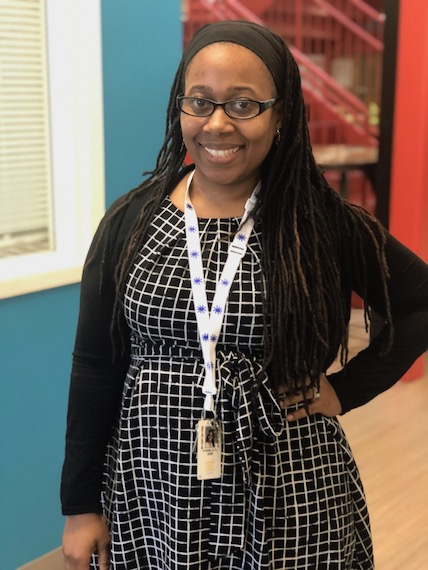
To me, being a leader is all about activating the leadership in others.
I’ve been working in public education for eleven years, first as a high school science teacher, and then as a STEM teacher coach in Chicago and NW Indiana, before stepping into leadership positions, first in Chicago, and most recently, at Summit Sierra in Seattle.
I’m always looking for the fuel of the fire, that opportunity to innovate and make our system more equitable. For me, as a leader, innovation and equity go hand-in-hand.
Sometimes people ask me, “Why charter?” and I tell them why charters were created: to be innovative hubs in education where we can explore new approaches, apply those learnings, share them out and make a more equitable education system.
As a science teacher, I believe in research. Medical doctors conduct studies and build clinics to innovate their practice. To me, that is the whole purpose of charter schools – to make our entire practice stronger. Not to divide, but to feed our entire practice.
Some of the things we’ve been doing for generations aren’t working, and we owe it to students to step out there and try new things. And this doesn’t mean just rolling out new practices; it means bringing parent and student voice to the table as we create something new together. That is where true innovation comes – when we have multiple stakeholders at the table. What do we want for our students, our school, our system? That is how our nation’s public schools were created to begin with – and we have to recognize and welcome new voices to the table.
Officially, I’m a first-generation college graduate, but I tell people I’m a third-generation educator. My grandmother, the daughter of sharecroppers in Mississippi, was the teacher of her siblings and neighbors. That’s how education was. People got together in their homes; education had a community feel.
Growing up in Chicago, education was so important to my family. My mom dropped out of high school (she later earned her GED and Associates). She wanted to make sure that my life would be set up better than what she had. Coincidentally, my first teaching job was in the very school my mom dropped out of. I thought: How can I be the teacher that wasn’t there for my mom when she dropped out the second semester of her senior year? Who didn’t call? Who didn’t reach out? How can I become that person for students?
Today, I have the opportunity to impact how teachers and students think about their work. To me, being a leader is all about activating the leadership in others. When you are bogged down in the weeds and can’t think, you need someone to push you, inspire you, and remind you of your moral compass and your why. To be a sounding board and help others become the best leader in themselves—that’s what a leader is.
I love leveraging leadership in others, building a team, getting everyone around a shared vision and getting people to the table to support it. We always market Martin Luther King, Jr. as a strong leader, but what he had was the ability to mobilize, and to me, that’s what a leader does. Personally, I am driven by my own moral philosophy of pushing culturally relevant and rigorous practices. So, as I’m helping others stay on their path, I show up in my leadership making sure that message is present in my coaching.
Leadership can be lonely sometimes and hard. There are so many assumptions about what leaders are supposed to possess and what they have. When we get into leadership positions we do so much giving out, but think about what is feeding into you is really important. I learned that as a leader one of the best things I can do is build a strong support system around you. We cannot stop learning and developing our own leadership skills. This work is hard, and busy, but it’s worth it.
At the end of the day, the way we change learning is the way we change culture: by changing the rules and expectations of our existing systems. If we decide “this is what learning today looks like” at the high school level, then we will have the power to impact higher education. Colleges will be forced to make more equitable systems in their settings so that our students can be more successful. High school and college look so different today – if we aren’t changing how we are thinking about learning, we aren’t making it more equitable.
